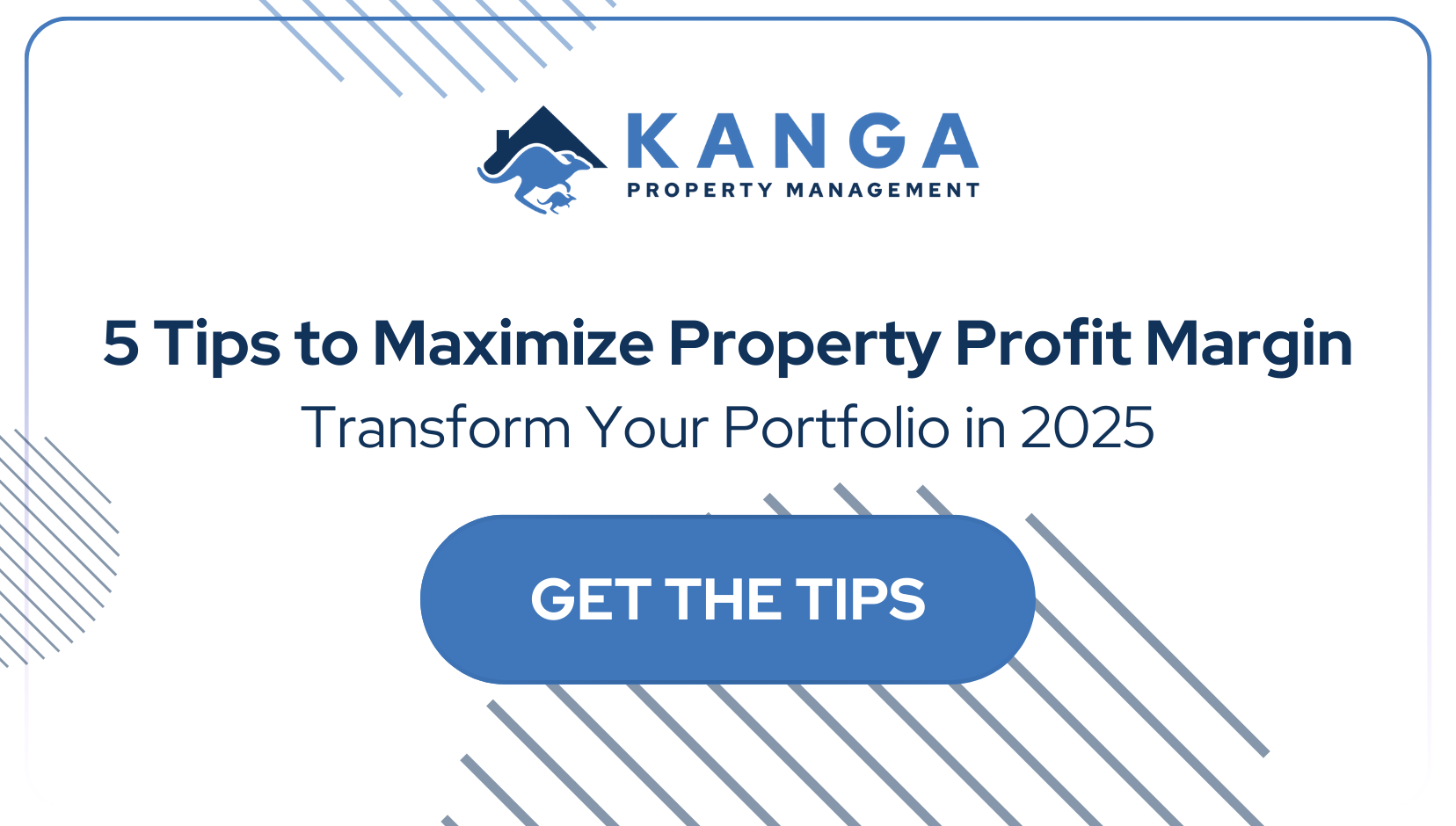
How to Reduce Tenant Turnover: Effective Strategies for Property Owners
Tenant turnover can be a costly problem for property owners. Each time a renter leaves, you face expenses for cleaning, repairs, marketing, and lost income during vacancy periods.
These costs can quickly add up, cutting into your rental property profits and creating unnecessary stress. By focusing on tenant satisfaction, proper maintenance, and building positive relationships, you can significantly improve retention rates.
Many landlords find that offering incentives for lease renewals and keeping rent increases reasonable helps tenants stay longer. Simple changes like responding quickly to maintenance requests and screening tenants thoroughly can transform your property’s retention rates.
Professional help from companies like Kanga Property Management can also improve retention. When tenants feel valued and comfortable, they’re more likely to renew their leases.
Key Takeaways
- Thorough tenant screening and building strong relationships significantly reduces turnover and vacancy costs.
- Regular maintenance, fair rent increases, and renewal incentives keep tenants satisfied and more likely to stay.
- Professional property management services can improve tenant retention through consistent communication and responsive service.
Understanding Tenant Turnover
Tenant turnover occurs when renters leave and new ones move in. This process impacts your bottom line through costs, time, and effort required to find new tenants.
Defining Tenant Turnover
Tenant turnover refers to the rate at which renters vacate a property and need to be replaced with new occupants. It typically happens when a lease ends and the tenant decides not to renew.
Tenant Turnover Rate is the percentage of occupants who decide to leave their units at the end of their lease terms. High tenant turnover often indicates underlying issues with the property, management, or market conditions.
These issues might include poor property maintenance, uncompetitive rental prices, inadequate tenant screening, location problems, or unaddressed tenant complaints. When tenants frequently move out, it creates a cycle that can significantly impact your rental income and property value over time.
Measuring Turnover Rates
To calculate your turnover rate, divide the number of units that became vacant during a specific period by the total number of units you own, then multiply by 100. For example:
Turnover Rate = (Number of Vacated Units ÷ Total Units) × 100
A lower percentage indicates better tenant retention. Rates above 20% often signal potential problems that need addressing.
Track this metric regularly—quarterly or annually—to identify trends and measure the effectiveness of your retention strategies. Many landlords use property management systems to monitor these metrics automatically.
Costs Associated With Tenant Turnover
The financial impact of tenant turnover extends beyond just lost rent. Turnover costs include:
Direct costs:
- Marketing and advertising fees ($150-$1,000)
- Screening new applicants ($25-$75 per application)
- Cleaning and repairs ($500-$5,000)
- Painting and updates ($200-$3,000)
- Leasing fees (often one month’s rent)
Indirect costs:
- Lost rental income during vacancy (1-3 months typically)
- Utilities during vacancy
- Your time and effort managing the process
These expenses can quickly add up to thousands of dollars per turnover event. Professional management from companies like Kanga Property Management can help reduce these costs through efficient processes and tenant retention strategies.
The Impact of Tenant Turnover on Rental Properties
Tenant turnover creates significant financial strain on property owners through direct costs, lost income, and administrative burden. Every vacancy period represents money lost and additional expenses that directly affect your bottom line.
Profitability and Rental Income
When tenants leave, your rental income stops immediately. This interruption can last weeks or even months depending on market conditions and property readiness.
Each month of vacancy typically costs you an entire month’s rent. For a property renting at $1,500 monthly, just two months of vacancy means $3,000 in lost income annually.
Beyond lost rent, turnover creates additional expenses:
- Cleaning costs ($200-500)
- Repair expenses ($500-2,000+)
- Painting and updates ($300-1,000)
- Inspection fees ($100-200)
These expenses can quickly consume 2-6 months of your annual profit margin on the property. Professional management through services like Kanga Property Management can reduce these costs through preventative maintenance and tenant retention strategies.
Effect on Occupancy Rate And Cash Flow
High turnover directly impacts your occupancy rate, a key metric for investment property success. The average turnover costs between $1,000-3,000 per occurrence, severely disrupting cash flow.
Your mortgage, property taxes, insurance, and utilities continue regardless of occupancy. Without incoming rent, these expenses must come from your reserves or personal funds.
Unstable tenant bases create unpredictable income patterns that complicate financial planning. Properties with turnover rates exceeding 30% annually often struggle to maintain profitability.
Cash flow interruptions can force difficult decisions:
- Postponing property improvements
- Reducing maintenance quality
- Accepting less qualified tenants
- Lowering rental rates to fill vacancies quickly
These compromises can create a downward spiral, as deferred maintenance leads to more tenant dissatisfaction and further turnover.
Marketing and Leasing Costs
Finding new tenants requires significant marketing investment. Each vacancy cycle typically costs $300-1,000 in advertising expenses across various platforms.
Your marketing costs typically include:
- Online listing fees on rental websites
- Photography and virtual tours
- Print materials and signage
- Credit and background checks ($25-50 per applicant)
The leasing process consumes your time or requires paying professionals. Showing the property to prospective tenants takes 5-10 hours per vacancy, plus administrative time processing applications.
When calculating the true cost of turnover, don’t overlook your personal time investment. Hours spent handling vacancies could be directed toward more profitable activities or personal time.
Streamlining the leasing process with professional cleaning, prompt unit updates, and effective advertising can reduce vacancy periods. Properties using professional management services typically experience shorter vacancy durations.
Screening and Selecting Good Tenants
Finding reliable tenants is a crucial step in reducing turnover rates. Proper screening helps you identify renters who will stay longer, take better care of your property, and pay rent on time.
Effective Tenant Screening Techniques
Start with a thorough application process that collects all necessary information. Use a standardized form that asks for:
- Full legal name and contact information
- Current and previous addresses (last 3-5 years)
- Employment history and income verification
- Personal references
- Rental history and previous landlord contacts
Set clear qualification criteria before reviewing applications. This includes minimum income requirements (typically 3x the monthly rent), credit score thresholds, and rental history expectations.
Be consistent in applying these standards to avoid discrimination claims. Consider using online property management tools to streamline the screening process.
These platforms can help you collect applications, run background checks, and store documentation securely. Professional property managers like Kanga Property Management can handle the entire screening process, saving you time while finding high-quality tenants.
Background Checks and References
Always run comprehensive background checks on potential tenants. These should include:
- Credit reports to verify financial responsibility
- Criminal background checks
- Eviction history
- Employment verification
- Income verification (pay stubs, tax returns, bank statements)
Contact previous landlords and ask specific questions about payment history, property care, and reasons for moving. Try to speak with previous landlords, not just current ones.
Call employers to verify employment status, salary, and length of employment. This helps ensure the tenant can afford the rent long-term.
Verify the tenant’s identity with government-issued photo ID to prevent fraud.
Lease Agreements and Lease Term
Create clear, comprehensive lease agreements that protect both parties. Include these key elements:
- Precise lease term (6 months, 1 year, 2 years)
- Rent amount, due date, and acceptable payment methods
- Security deposit amount and conditions for return
- Maintenance responsibilities (landlord vs. tenant)
- Rules regarding guests, pets, noise, and property alterations
- Renewal terms and notice periods
Consider offering longer lease terms to reduce turnover frequency. Two-year leases can significantly cut down on vacancy periods and turnover costs.
Provide incentives for lease renewals, such as minimal rent increases or property upgrades. Some landlords offer a small discount for tenants who renew early.
Review the lease in person with new tenants, explaining key points and answering questions. This helps establish clear expectations and reduces future misunderstandings.
Building Strong Landlord-Tenant Relationships
Creating strong relationships with your tenants is one of the most effective ways to reduce turnover and maintain long-term renters. Building positive landlord-tenant connections increases satisfaction and makes tenants more likely to renew their leases.
Communication With Tenants
Effective communication forms the foundation of any successful landlord-tenant relationship. Set clear expectations from the beginning by providing detailed lease agreements and property rules.
Establish multiple communication channels that suit different preferences. This might include:
- Email for formal communications and documentation
- Text messaging for quick updates
- Phone calls for urgent matters
- An online tenant portal for maintenance requests
Regular check-ins show tenants you care about their experience. Consider quarterly newsletters or updates about property improvements, community events, or important reminders.
Clear and consistent communication helps prevent misunderstandings and creates an open environment where issues can be addressed promptly.
Promptly Addressing Tenant Inquiries and Complaints
Quick responses to tenant concerns directly impact their satisfaction and willingness to stay. Aim to acknowledge all inquiries within 24 hours, even if you need more time to fully resolve the issue.
Create a streamlined system for handling maintenance requests. Many property managers, including Kanga Property Management, offer digital platforms where tenants can submit and track the status of their requests.
For maintenance issues, follow these steps:
- Acknowledge receipt of the complaint
- Provide a timeline for inspection or repair
- Keep the tenant updated on progress
- Follow up after completion to ensure satisfaction
How you handle complaints matters as much as fixing the problem. Stay professional and avoid being defensive, even when facing criticism.
Fostering Positive Relationships
Building rapport with tenants goes beyond basic landlord responsibilities. Small gestures make a big difference in how tenants perceive you and your property.
Consider these relationship-building tactics:
- Welcome packages for new tenants with useful information and small gifts
- Appreciation gifts at lease renewal time (gift cards, rent discounts)
- Property improvements based on tenant feedback
- Responsiveness to changing needs like allowing reasonable modifications
Collect tenant feedback through surveys or casual conversations to show you value their opinions. Implement reasonable suggestions when possible and explain when you cannot.
Respect tenant privacy by providing proper notice before entering the property. This simple courtesy demonstrates respect and helps maintain trust.
Property Maintenance and Tenant Satisfaction
Property maintenance directly impacts tenant satisfaction and retention. When landlords prioritize upkeep and respond quickly to issues, tenants feel valued and are more likely to renew their leases.
Regular Maintenance and Repairs
Establish a preventative maintenance schedule to catch small problems before they become expensive emergencies. Create a calendar for seasonal tasks like:
- HVAC inspections (spring and fall)
- Gutter cleaning (twice yearly)
- Exterior painting (every 5-7 years)
- Appliance servicing (annually)
Regular upkeep shows you care about the property and tenant comfort. When tenants see your investment in maintenance, they view their rental as a home.
Provide tenants with seasonal maintenance reminders. Simple instructions for changing air filters or checking smoke detector batteries can prevent bigger problems and involve tenants in property care.
For multi-unit properties, invest in updates that improve quality of life. Energy-efficient appliances and updated fixtures can make a big difference.
Handling Maintenance Requests
How you respond to maintenance requests greatly affects tenant satisfaction. Quick responses to repair requests can reduce turnover.
Set up a clear system for maintenance requests:
- Offer multiple reporting channels (text, email, online portal).
- Acknowledge receipt within 24 hours.
- Provide realistic repair timelines.
- Follow up after completion to ensure satisfaction.
Respond to urgent issues like water leaks or heating failures within hours. Address non-emergency requests within 48-72 hours.
If you can’t handle maintenance yourself, partner with reliable contractors. Many landlords use Kanga Property Management for prompt, professional maintenance.
Conducting Inspections
Regular inspections help you find maintenance issues before tenants do. Schedule inspections that respect tenant privacy while protecting your investment.
Inspection Schedule:
| Type | Frequency | Purpose |
|---|---|---|
| Move-in | Before tenant arrival | Document property condition |
| Seasonal | 2-4 times yearly | Identify maintenance needs |
| Drive-by | Monthly | Check exterior condition |
| Move-out | After tenant leaves | Assess damages and repairs |
Always give proper notice (24-48 hours) before entering a tenant’s home. Keep inspections brief and focused on maintenance.
Use a checklist during inspections for consistency. Take photos to document conditions and share findings with tenants, along with planned maintenance.
Addressing Safety Concerns
Address safety issues immediately. Prioritizing safety shows you care about tenant wellbeing and helps you avoid liability.
Maintain key safety elements:
- Fire safety: Working smoke and carbon monoxide detectors, fire extinguishers, clear escape routes
- Security measures: Functioning locks, outdoor lighting, secure access points
- Trip hazards: Repair uneven walkways, loose railings, or damaged flooring
- Environmental hazards: Test for radon, lead, and mold
Offer easy reporting channels for safety concerns and respond to them faster than standard requests. Thank tenants who report safety issues.
Document all safety maintenance in detail. This protects you legally and shows tenants you take their wellbeing seriously.
Offering Amenities and Tenant Incentives
The right amenities and incentives can greatly reduce tenant turnover and increase satisfaction. Strategic upgrades and thoughtful perks make tenants feel valued.
Upgrading Modern Amenities
Modern amenities are essential for attracting long-term tenants. High-speed internet is now as important as electricity, especially for remote workers.
Consider upgrading to fiber optic internet or including internet service in the rent. Outdoor spaces like swimming pools, patios, or community gardens encourage tenants to stay.
Simple additions like package lockers, smart thermostats, or keyless entry systems can boost satisfaction. In-unit washers and dryers are highly prized and often lead to lease renewals.
If full renovations aren’t possible, focus on small upgrades like USB outlets, smart lighting, or water-efficient fixtures.
Providing Tenant Incentives
Renewal incentives encourage tenants to extend their leases. Offer options like:
- Rent discounts (5-10% for multi-year leases)
- Gift cards to local restaurants or shops
- Free professional cleaning service
- Complimentary carpet cleaning or painting
- Upgrades to fixtures or appliances
Approach tenants 60-90 days before lease expiration with your offer. This gives them time to consider and reduces last-minute housing searches.
Welcome packages for new tenants, including local information and essentials, create positive first impressions. Kanga Property Management creates customized welcome packages to make tenants feel valued.
Enhancing Tenant Loyalty and Experience
Consistent communication and responsiveness build loyalty. Use user-friendly maintenance request systems so tenants can report issues and track progress.
Host community events to foster connections between neighbors. Simple gatherings like holiday parties or barbecues help tenants build relationships.
Create a tenant referral program with meaningful rewards. Reward tenants who recommend your property with gift cards or rent discounts.
Conduct annual tenant satisfaction surveys to gather feedback. Make visible changes based on this feedback so tenants know their opinions matter.
Retention Strategies to Reduce Tenant Turnover
Keeping good tenants saves money and time. Focus on creating value for tenants while maintaining your property’s profitability.
Implementing Tenant Retention Strategies
Start with responsive maintenance. Address reported issues quickly to show you value tenant comfort and safety.
Maintain regular communication through email, text, or a tenant portal. Ask for feedback and act on reasonable suggestions.
Create a welcoming atmosphere from the start. Provide a move-in packet with local recommendations and emergency contacts.
Security improvements show you care about tenant safety. Consider updated locks, lighting, security cameras, and smart home features.
Rent Discounts and Incentives
Financial incentives can reduce tenant turnover. Offer loyalty discounts for lease renewals, even a 3-5% reduction can encourage tenants to stay.
Surprise tenants with perks like free annual cleaning, gift cards on lease anniversaries, or property upgrades.
Reward on-time payments with small discounts after six consecutive months. Acknowledge holidays or birthdays with a card or small gift to show appreciation.
Encouraging Lease Renewals
Start renewal conversations early—at least 60-90 days before the lease ends. This prevents last-minute vacancies.
Make the renewal process simple with online options and clear documentation. Keep rate increases fair and consistent to avoid pushing tenants away.
Offer longer lease terms with benefits, such as smaller rate increases or property upgrades. Personalize renewal offers for good tenants, recognizing their positive history.
Focusing on Long-Term Tenants
Give special attention to long-term tenants. Offer property upgrades like new appliances or fresh paint to show appreciation.
Build relationships through occasional check-ins. Ask about their experience and what could improve it.
Allow reasonable customization, such as painting an accent wall or installing shelving. This helps tenants feel at home.
Implement a tenant loyalty program with tiered benefits based on length of stay. Offer priority maintenance in year one and rent discounts or property improvements in later years.
Optimizing Rental Rates and Lease Terms
Balancing pricing and lease flexibility is essential for retaining quality tenants. Strategic decisions in these areas affect how long renters stay and how satisfied they feel.
Setting Competitive Rental Rates
Research local market rates before setting prices. Check comparable properties to understand what similar units rent for.
Don’t always price at the market maximum. A slightly lower rate can attract reliable, long-term tenants and reduce vacancies.
Use data-driven pricing strategies to optimize rental income. These tools analyze market conditions and trends to recommend optimal rates.
Professional services like Kanga Property Management can help you set the right price to maximize profits and attract quality tenants.
Managing Rent Increases
Communicate transparently when increasing rent. Explain your rent increase policy before tenants sign the lease.
Follow best practices for rent increases:
- Keep increases modest (3-5% annually)
- Provide generous notice (60+ days)
- Explain market reasons for the change
- Avoid increases during holidays
Remember, tenant turnover costs often exceed gains from aggressive rent hikes. Calculate vacancy and turnover expenses before raising rent.
Adjusting Lease Terms to Meet Tenant Needs
Offer flexible lease terms to reduce turnover. Provide options beyond the standard 12 months, such as 6, 18, or 24-month leases.
Create lease renewal incentives like:
- Small rent discounts for multi-year commitments
- Free upgrades or improvements
- Waived amenity fees
- Gift cards or move-in anniversary presents
Negotiate reasonable accommodations for good tenants. Allowing a pet or minor modifications can turn a short-term renter into a long-term resident, boosting retention rates.
Role of Property Management in Reducing Tenant Turnover
Effective property management keeps tenants happy and reduces turnover. Property managers bridge the gap between owners and renters, handling maintenance and communication.
Property Manager Responsibilities
Property managers handle daily operations that impact tenant satisfaction. They respond promptly to maintenance requests, which reduces frustration and encourages lease renewals.
A good property manager ensures consistent rent collection and maintains clear communication. They conduct regular inspections to identify issues before they become bigger problems.
Property managers also:
- Screen potential tenants
- Handle lease renewals
- Address complaints quickly
- Maintain property condition and value
- Provide emergency response services
These responsibilities help maintain high occupancy rates and create a positive tenant experience.
The Value of Professional Property Managers
Professional property management companies like Kanga Property Management bring valuable expertise. They understand market trends and set competitive rent prices to attract and retain quality tenants.
They use proven retention strategies, such as renewal incentives and community-building events. Professional managers offer 24/7 support for tenant concerns, a key factor in tenant satisfaction and retention.
They use software to track maintenance, lease dates, and communication. This organization prevents issues from being overlooked.
Working With Brokers
Collaborating with brokers gives property managers valuable market insights. Brokers know the commercial real estate (CRE) landscape and can advise on competitive amenities.
They help identify tenant preferences in specific areas. This allows you to better meet renter expectations in competitive markets.
Brokers also:
- Connect property managers with quality tenant leads
- Provide comparisons of similar properties
- Offer insights on market-appropriate lease terms
- Suggest property improvements with high ROI
Frequently Asked Questions
Landlords and property managers often face challenges in keeping good tenants.
What strategies can landlords implement to ensure long-term tenancy?
Maintaining competitive rent prices is crucial for tenant retention. Research local market rates and avoid sudden large increases that might drive tenants away.
Respond quickly to maintenance requests. Tenants who feel their concerns are addressed promptly are more likely to stay longer.
Create a thorough tenant screening process to find reliable, long-term renters. Look for stable employment history and positive previous rental references.
Consider working with Kanga Property Management, who specializes in tenant retention strategies tailored to your specific property needs.
Which tenant retention practices are most effective for property managers?
Offering lease extensions before the current lease expires gives tenants peace of mind. This proactive approach shows you value their tenancy.
Providing modern amenities that meet tenant expectations can reduce turnover. In-unit laundry, updated appliances, and smart home features are highly valued.
Regular property upgrades show your commitment to maintaining a quality living environment. Even small improvements can make tenants feel their home is well-cared for.
How can improving tenant-landlord communication reduce turnover rates?
Establish multiple communication channels like email, text, and phone. Let tenants choose their preferred method for routine and emergency communications.
Be transparent about policies, especially regarding rent increases. Explaining the reasoning behind changes helps tenants understand and accept necessary adjustments.
Schedule regular check-ins to address concerns early. A simple “How is everything going?” can identify issues before they become problems.
What role does timely and efficient property maintenance play in retaining tenants?
Invest in maintenance to reduce turnover. Quick repairs prevent small issues from becoming major frustrations.
Seasonal preventative maintenance shows tenants you care about their comfort and safety. This approach reduces emergency calls and tenant dissatisfaction.
Create a simple maintenance request system that acknowledges receipt and provides estimated response times. This transparency builds trust even when immediate repairs aren’t possible.
How do incentives and renewal perks influence a tenant’s decision to stay?
Offering renewal incentives like a free carpet cleaning or small rent discount can encourage tenants to stay. These gestures often cost less than turnover expenses.
Consider loyalty programs that increase benefits the longer a tenant stays. Small perks like gift cards on lease anniversaries show appreciation.
Flexible lease terms can be a powerful incentive. Some tenants may stay longer if given options like month-to-month arrangements after an initial term.
What are the best ways to foster community among residents to decrease turnover?
Organize occasional community events like summer barbecues or holiday gatherings. These events help tenants feel part of a community.
Create shared spaces that encourage interaction, such as gardens, picnic areas, or community rooms. These amenities offer value beyond the individual unit.
Acknowledge important events in tenants’ lives when appropriate. Sending a card for a new baby or job promotion builds personal connections that reduce turnover rates.
Keep Your Quality Tenants Longer: Partner with Kanga Property Management
Reducing tenant turnover requires a proactive approach focused on property maintenance, responsive communication, fair pricing, and creating a positive living environment. By implementing these strategies, property owners can significantly decrease vacancy rates, minimize marketing expenses, and establish a stable rental income stream.
However, implementing these practices effectively demands time, expertise, and consistent effort.
Kanga Property Management specializes in tenant retention strategies that keep quality renters in place longer, saving you thousands in turnover costs while maintaining your property’s value.
Our professional team handles everything from regular property inspections to tenant relationship management, allowing you to enjoy the benefits of property ownership without the day-to-day hassles.
Contact Kanga Property Management today to discover how our tenant retention expertise can transform your investment experience.




